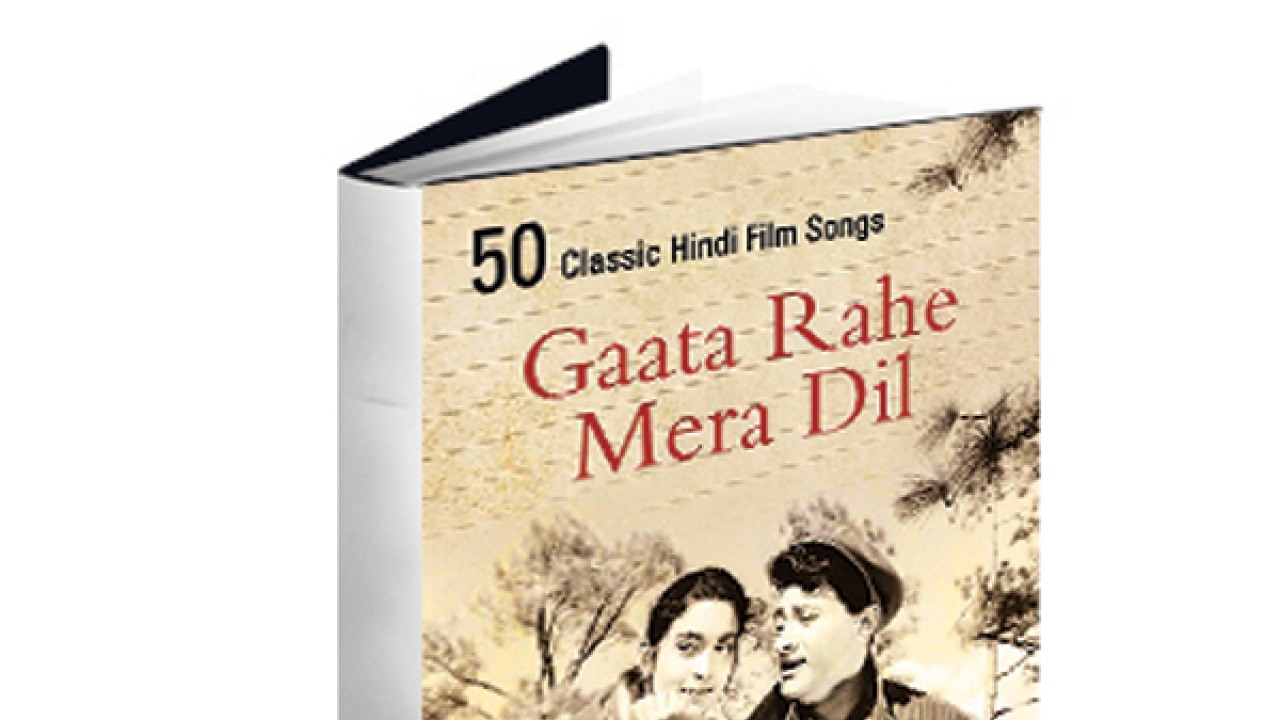
Book: Gaata Rahe Mera Dil
Author: Anirudha Bhattacharjee and Balaji Vittal
Publisher: HarperCollins India
Rs 350
Pages: 300
Three years after winning the National Award for their book RD Burman– The Man, The Music, authors Aniruddha Bhattacharjee and Balaji Vittal have put themselves in hot water… and knowingly so. In fact, in the Authors' Note in Gaata Rahe Mera Dil, their pick of the 50 best classic Hindi film songs, they write: "To have to select fifty songs from an estimated repository of around a hundred thousand is like being sent to Ali Baba's cave of treasures with no hand baggage."
One empathises with the predicament (and heartburn) of whittling down almost six mammoth decades of Hindi film music (1938-1992) – into the proverbial grain of sand that's this book. But whether or not the authors' methodologies and criteria for selecting the final 50 are fool proof (they aren't), one can't fault them for stopping at 1992. "This takes care of the danger of falling into the trap of the 'instant classic'," they note.
The term 'labour of love' is often used casually, but Gaata Rahe Mera Dil is befitting of that descriptor. The authors go beyond merely drawing from historians, musicians and filmmakers and give fans and unsung heroes of film composition – arrangers, instrumentalists and orchestras – equal footing. Everyone from Dattaram Wadkar and Sebastian D'Souza (staples in Shankar-Jaikishan's orchestras) to trumpet player George Fernandez and bass guitarist Charanjit Singh gets a hat-tip. In that sense, Gaata Rahe Mera Dil is truly egalitarian.
Also helping the book's cause are the delightful anecdotes, particularly the snippets in the midst of a retelling (a la song hooks) of how a track was composed. So you have stories of Ramon Novaro's Pagan Love Song inadvertently birthing the first playback number in Indian film (Nitin Bose's Bengali-Hindi bilingual Bhagyachakra and Dhoop Chhaon), Lata Mangeshkar being pursued by lyricist Nakshab Jarchvi during the recording of the timeless Aayega Aanewala (Mahal, 1949), the 'what-if' scenario of Carnatic luminary M.S. Subbulakshmi voicing Allah Tero Naam in Hum Dono (1961) instead of Lata, and many more.
Vittal and Bhattacharjee have listed tracks that don't just have recall value, but also stand out both musically (whether from the film's album itself, or through the annals of time) and for the way they unfold on screen. Which is why Awara's Tere bina aag yeh chandni/Ghar aaya mera pardesi (1951) makes the cut for its grandeur, while Jaane kahaan gaye woh din from Mera Naam Joker (1971) is included for its innovative picturisation.
Gaata Rahe Mera Dil isn't merely about hitherto-unknown stories, though. The technicalities of how each alaap, antara or mukhra came to be in a song are addressed too. While this may not appeal to those who aren't classically trained, it nevertheless makes one appreciate the intricacies of film song composition – something we often take for granted.
A personal favourite takeaway is the recognition given to brilliant composers (Hemant Kumar, Madan Mohan, Jaidev, Vasant Desai, Ravindra Jain) lyricists (Yogesh, Prem Dhawan, Shamsul Huda Bihari, Santosh Anand) and vocalists (Yesudas, Shiv Dayal Batish and again – Hemant Kumar), who, compared to more popular peers, never got the due they deserved.
But Gaata Rahe Mera Dil is not without fault. For one, it's criminal to leave out 'King of Swing' C. Ramchandra – who not only introduced the 'Western' sound before Shankar-Jaikishan, but also composed unforgettable soundtracks for Albela, Anarkali and Navrang. Music director Ravi is also absent in this list. And the song of note (so to speak) the authors credit to O.P. Nayyar is Deewana Hua Baadal from Kashmir Ki Kali (1964), thus overlooking his genius for films in the '50s: Aar Paar, CID, Mr & Mrs 55, Howrah Bridge, Naya Daur and Tumsa Nahi Dekha (whose music catapulted Shammi Kapoor's career).
One also spotted two errors: Bhattacharjee and Vittal credit 'Shamsul Haq Bihari' as the lyricist for Deewana Hua Baadal, when it was Shamsul Huda Bihari. They also name the child artiste in Baiju Bawra as Asha Parekh, when the role (of young Gauri) was in fact essayed by Tabassum.
But these peeves don't take away from what the book offers. It's a given that readers will take issue with song selection, considering how touchy we get about any 'best of' lists. The author duo has invited readers to create and share their own lists in an effort to make this book "an interactive, ongoing venture".
Gaata Rahe Mera Dil makes information from biographies, interviews, articles and even hearsay accessible through its 300 pages, and therein lies its strength. Vittal and Bhattacharjee are genuinely passionate about the golden years of Indian cinema, and it shows. The zeal is infectious – it makes you want to revisit the songs on YouTube while you're reading about them – not just to identify an appreciate the details one may have otherwise overlooked, but to also hark to when song composition was a confluence of quality writing, music and vocals.
Here's hoping Vittal and Bhattacharjee are already working on a follow-up to this one.